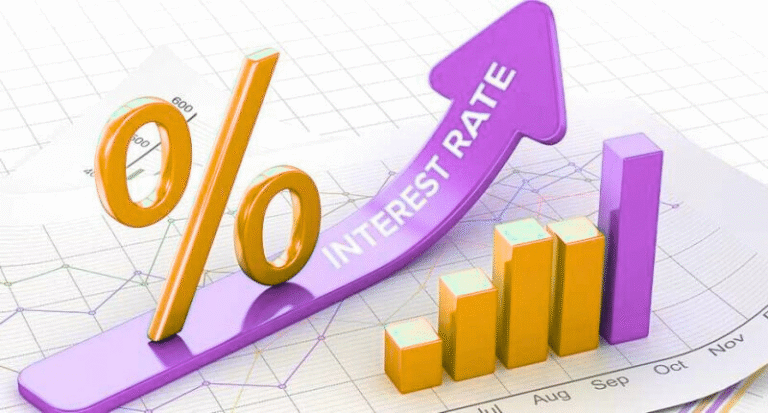Second Mortgage Lenders Australia: A Complete Guide
If you already own property and need extra funds, a second mortgage can be a flexible way to unlock your home’s equity. In Australia, second mortgage lenders cater to homeowners who want to consolidate debt, renovate, invest, or cover major expenses. Unlike a refinance, this option allows you to keep your existing home loan while borrowing additional funds. In this guide, we’ll explore everything you need to know about second mortgage lenders Australia, including how they work, eligibility requirements, top providers, and tips for making the right decision.
What is a Second Mortgage?
A second mortgage is a loan secured against the equity in your property, sitting behind your primary home loan. It doesn’t replace your first mortgage but adds an additional charge on the same property.
Key Characteristics
Interest Rates: Often higher, reflecting greater risk for lenders.
Security: Uses your home equity as collateral.
Priority: The first mortgage has repayment priority, then the second.
Loan Size: Typically smaller than the first mortgage.
Why Consider a Second Mortgage in Australia?
Second mortgages are not as common as refinances, but they serve specific needs. Homeowners often consider them when:
- Debt consolidation: Paying off high-interest personal loans or credit cards.
- Home renovations: Funding upgrades without disturbing the first mortgage.
- Business investment: Accessing equity to start or grow a business.
- Short-term financial needs: Covering unexpected medical bills, education costs, or emergencies.
How Do Second Mortgage Lenders in Australia Work?
Lenders who provide second mortgages assess the borrower’s equity, creditworthiness, and ability to service an additional loan. Unlike traditional banks, many second mortgage providers are specialist or non-bank lenders.
The Process
- Equity Check – Lenders calculate available equity by subtracting the first mortgage balance from the property’s current market value.
- Risk Assessment – They consider your credit history, income, and repayment ability.
- Loan Structure – Funds may be provided as a lump sum or line of credit.
- Approval – Terms are set, including interest rate, loan-to-value ratio (LVR), and repayment period.
Benefits of Second Mortgages
- Retain existing home loan without refinancing.
- Access to funds quickly if approved.
- Flexible usage: personal, investment, or renovation purposes.
- Possible tax benefits if used for investment (seek professional advice).
Risks of Second Mortgages
- Higher interest rates compared to first mortgages.
- Foreclosure risk if repayments are missed.
- Limited lender options, as big banks are less likely to offer them.
- Additional fees such as valuation, legal, and application costs.
Who Are the Second Mortgage Lenders in Australia?
While major banks usually avoid second mortgages, some non-bank lenders, private lenders, and specialist finance companies offer them. Examples include:
- Private mortgage lenders
- Specialist finance brokers
- Non-bank financial institutions
- Short-term and bridging loan providers
These lenders are often more flexible with credit history but may charge higher rates.
Eligibility Criteria for Second Mortgages
To qualify for a second mortgage in Australia, lenders generally require:
- Minimum 20–30% equity in your property.
- Stable income to prove repayment ability.
- Decent credit history (though private lenders may be more lenient).
- Property type and location within acceptable lending guidelines.
How Much Can You Borrow?
Borrowing capacity depends on:
- Property’s current market value
- Remaining balance of the first mortgage
- Lender’s maximum LVR (often capped at 75–80% combined loan-to-value ratio)
For example:
- Property value: $800,000
- First mortgage balance: $500,000
- Max LVR: 80% → $640,000
- Maximum second mortgage: $140,000
Interest Rates for Second Mortgages in Australia
Second mortgage interest rates are generally higher than standard home loans. Factors affecting the rate include:
- Credit score
- Loan size
- Lender type (non-bank/private vs. mainstream)
- Loan term (short-term loans often attract higher rates)
Alternatives to Second Mortgages
Before committing, it’s worth exploring alternatives:
- Refinance your existing home loan to release equity.
- Line of credit loan for flexible borrowing.
- Personal loans (unsecured, but usually smaller amounts).
- Bridging finance if buying and selling property simultaneously.
Second Mortgage vs. Refinancing
| Feature | Second Mortgage | Refinancing |
| Loan Structure | Keeps first loan, adds second | Replaces existing loan |
| Interest Rates | Higher | Lower (usually) |
| Flexibility | Good for short-term needs | Better for long-term savings |
| Approval | Specialist lenders | Banks & lenders |
Steps to Apply for a Second Mortgage
- Assess equity in your property.
- Compare lenders that offer second mortgages.
- Prepare documents (income proof, property valuation, mortgage statement).
- Submit application through a broker or directly.
- Review terms including fees and interest.
- Sign agreement and receive funds.
How to Choose the Right Second Mortgage Lender in Australia
When comparing lenders, consider:
- Reputation and customer reviews.
- Flexibility with bad credit or unique circumstances.
- Fees and charges beyond interest rate.
- Loan features like redraw or offset options.
- Processing speed, especially for urgent needs.
💡 Tip: Before applying, you can estimate repayments using our mortgage calculator tool to plan better.
FAQs: Second Mortgage Lenders Australia
1. What is the difference between a second mortgage and a home equity loan?
Both use your property as security, but a second mortgage is a loan taken in addition to your existing mortgage, while a home equity loan may replace or restructure your mortgage.
2. Do big banks in Australia offer second mortgages?
Most major banks avoid second mortgages. Instead, they encourage refinancing. Specialist and private lenders are the main providers.
3. Can I get a second mortgage with bad credit?
Yes, some private lenders approve second mortgages for borrowers with poor credit, but expect higher rates and stricter terms.
4. How long does approval take?
Depending on the lender, approval can take anywhere from a few days to a few weeks.
5. Is a second mortgage better than refinancing?
It depends. A second mortgage is better for short-term funding needs where you don’t want to disturb your first mortgage. Refinancing may be cheaper for long-term needs.
6. Can I use a second mortgage for investment purposes?
Yes, many borrowers use second mortgages to fund property investments, businesses, or shares.
7. What happens if I default on a second mortgage?
The lender can initiate foreclosure proceedings, but the first mortgage lender gets repaid first, then the second.
8. How much equity do I need?
Most lenders require at least 20–30% equity to approve a second mortgage.
9. Are second mortgages regulated in Australia?
Yes, they fall under the National Consumer Credit Protection Act (NCCP), ensuring responsible lending practices.
10. Can I repay a second mortgage early?
Yes, but check for exit or break fees in the contract.
11. Are interest payments on second mortgages tax-deductible?
If the funds are used for investment purposes, interest may be deductible. Always seek tax advice.
12. How do I find the best second mortgage lender?
Research specialist non-bank lenders, compare terms, and consult a mortgage broker for expert guidance.
Conclusion
Second mortgages can be a practical way to access home equity without disturbing your primary loan. While they come with higher interest rates and some risks, they can help fund renovations, debt consolidation, investments, or urgent expenses. Choosing the right lender is critical non-bank and private lenders often provide more flexibility than traditional banks.







